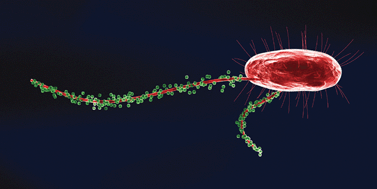New insights into F-pilus structure, dynamics, and function†
Abstract
F-pili are thin, flexible filaments elaborated by F+ cells of Escherichia coli. They belong to the class of Gram-negative

* Corresponding authors
a
Genetic Models of Disease Research Program, Oklahoma Medical Research Foundation, Oklahoma City
E-mail:
silvermanp@omrf.org
Fax: +1 405 271-7312
Tel: +1 405 271-7663
F-pili are thin, flexible filaments elaborated by F+ cells of Escherichia coli. They belong to the class of Gram-negative

 Please wait while we load your content...
Something went wrong. Try again?
Please wait while we load your content...
Something went wrong. Try again?
 Fetching data from CrossRef.
Fetching data from CrossRef.
This may take some time to load.
Loading related content
